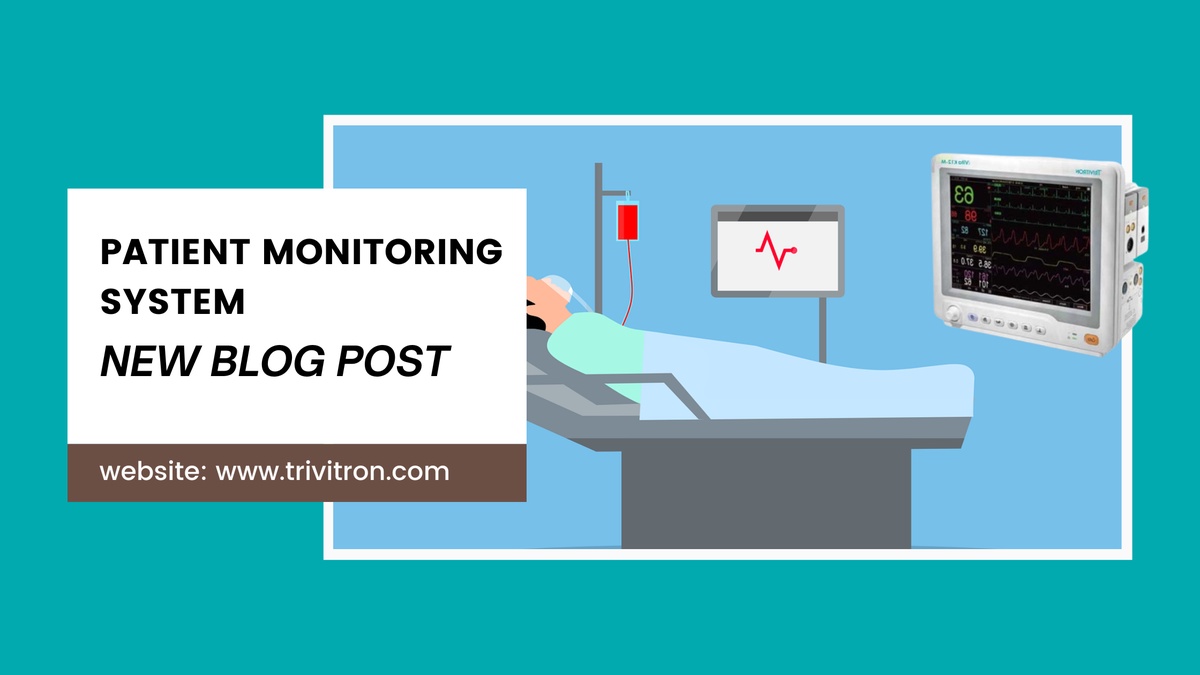Investing in patient monitoring systems represents a significant decision for hospitals and healthcare facilities. While there are upfront costs to consider, the potential benefits in terms of improved patient outcomes, optimized resource allocation, and potential long-term savings make it a valuable investment. Let's delve into the cost-benefit analysis of these systems.
Costs of Implementation
The initial costs associated with implementing patient monitoring systems include:
Hardware: The purchase of patient monitors, bedside units, wearable devices, and any necessary mounting equipment or accessories.
Software and Integration: Licensing fees for monitoring software and costs associated with integrating the system with existing electronic health records (EHRs) and other hospital IT systems.
Network Infrastructure: Upgrading or expanding network capabilities to handle the increased data flow from monitoring devices.
Staff Training: The cost of training medical staff on how to use the patient monitoring system effectively, interpret data, and respond to alerts.
Ongoing Maintenance: Regular maintenance and updates to software and hardware.
Potential Benefits of Implementation
While the initial investment may seem significant, the potential benefits of implementing patient monitoring systems far outweigh the costs:
Improved Patient Outcomes: Constant monitoring enables early detection of critical changes in a patient's health status. This facilitates rapid intervention, leading to better clinical outcomes and reducing complications.
Reduced Hospital Readmissions: Patient monitoring, especially when combined with remote monitoring systems (RPM), helps ensure timely and proactive care outside of the hospital. This can prevent unnecessary readmissions, which are costly for healthcare systems.
Enhanced Clinical Efficiency: Automated data flow into EHRs streamlines workflows. Nurses and doctors save time on manual data entry and have access to more comprehensive, real-time health information.
Optimized Resource Utilization: Patient monitoring systems aid in better bed management and resource allocation based on patient acuity and needs.
Risk Mitigation: Early detection of problems and enhanced monitoring can help reduce the risk of medical errors and adverse events, minimizing associated liability and legal costs.
Data-Driven Decision Making: The rich data generated by patient monitoring systems can be used for analysis and research, promoting evidence-based medicine and improving future care processes.
Long-Term Savings
Implementing a patient monitoring system can lead to long-term cost savings for healthcare organizations. Prevention of readmissions, enhanced efficiency, and potentially lower insurance premiums due to reduced risks can translate into a substantial return on investment (ROI).
Trivitron Healthcare: Cost-Effective and Patient-Centric Solutions
Trivitron Healthcare understands that budget considerations play a crucial role in hospitals' decisions regarding patient monitoring systems. Their range of monitors caters to different needs and offers a variety of parameter options, allowing tailored and cost-effective solutions. Additionally, Trivitron focuses on ease of use and clear data visualization, minimizing training costs and maximizing staff adoption.
Considerations for Maximizing ROI
Successful implementation and optimal ROI hinge on several factors:
Thorough Needs Assessment: Identify the specific clinical needs the system should address and select a technology that aligns with these requirements.
Strategic Planning: A phased implementation approach, starting with pilot projects or specific departments, can help manage costs and ensure smooth adoption.
Change Management: Engage stakeholders and provide extensive training for seamless integration of patient monitoring systems within existing workflows.
Vendor Partnerships: Choose vendors like Trivitron Healthcare, who are committed to providing affordable patient monitoring solutions (mindful of patient monitor price) and ongoing technical support.
The Future of Patient Care
Patient monitoring systems are becoming an indispensable tool for modern healthcare. As technology advances and costs decrease, the benefits will become even more accessible to a wider range of healthcare settings. By prioritizing strategic implementation and focusing on value-based outcomes, hospitals and clinics can leverage patient monitoring to provide better care, improve efficiency, and ultimately reduce the overall burden of healthcare costs.


No comments yet